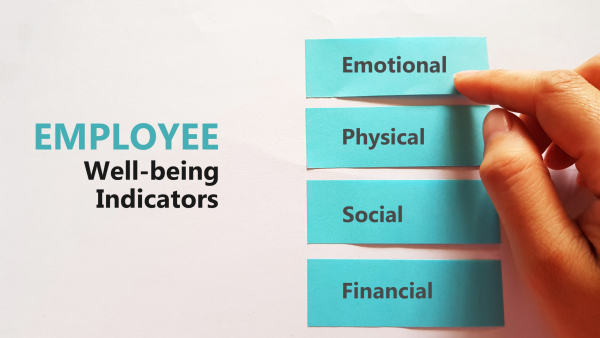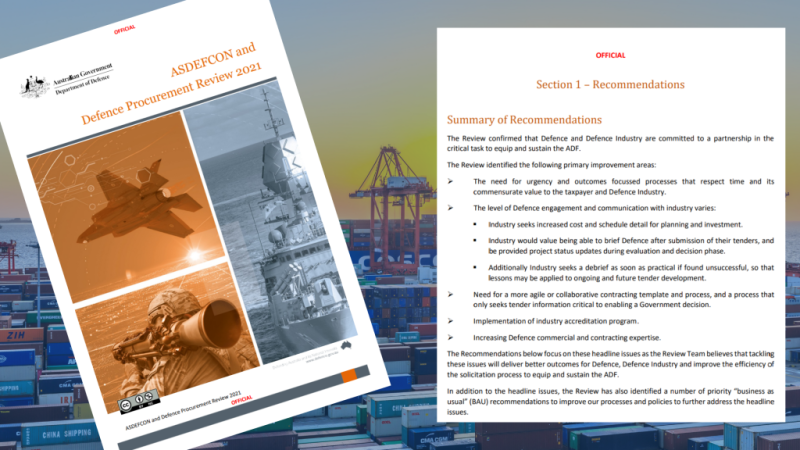Posted by Defence Teaming Centre on
In today’s fast-paced and demanding work environment, employee productivity plays a crucial role in any company’s success. Companies are increasingly recognising the importance of supporting their employees’ wellbeing, not just for their personal benefit but also for the overall performance of the business. This is where Employee Assistance Programs (EAP) and Wellness Programs step in. EAPs and Wellness Programs can enhance employee productivity and contribute to a healthier, happier, and more engaged workforce.
A research paper completed by the 2022 Defence Industry Leadership Program (DILP) participants sheds light on the effectiveness of such Wellbeing Programs, particularly within the Defence sector. The paper reveals that companies in the Defence sector utilise a broad range of concepts and resources to support employee wellbeing, including tailored programs and support groups for veterans transitioning to civilian life. However, it also highlights the challenge of engaging veterans who have had a negative military experience, emphasising the responsibility of companies to ensure the health and wellbeing of all employees.
By implementing EAPs and Wellness Programs companies can achieve the following for their employees.
Promoting Physical Wellbeing
A comprehensive Wellness Program encourages employees to adopt healthy lifestyle practices, such as regular exercise, balanced nutrition, and sufficient sleep. By providing resources and incentives for physical wellness, employers can help employees improve their overall health and energy levels. A fit and healthy workforce is more likely to have higher productivity levels, as they experience reduced absences, improved focus, and increased work capacity.
Supporting Mental Health
An EAP is designed to provide confidential counselling and support for employees facing personal challenges, including mental health issues. By addressing mental health concerns, such as stress, anxiety, and depression, companies can create a supportive work environment that prioritises employee wellbeing. When employees have access to professional assistance and guidance, they can effectively manage their mental health, resulting in increased focus, reduced burnout and enhanced productivity.
Work-Life Balance
A well-structured EAP and Wellness Program also acknowledges the importance of work-life balance. By offering flexible work arrangements, time-off policies, and support for personal commitments, employers can foster a healthy equilibrium between work and personal life. Employees who feel supported and have the flexibility to meet personal obligations are more likely to be satisfied and motivated, leading to improved productivity and decreased turnover rates.
Stress Management
Chronic stress can significantly hamper employee productivity and wellbeing. EAPs provide employees with the tools and resources to manage stress effectively. This may include stress management workshops, mindfulness programs, relaxation techniques, and access to stress reduction resources. By equipping employees with the skills to handle stress, companies can reduce absences, increase focus and concentration, and enhance overall productivity.
Financial Wellness
Financial stress is a significant concern for many employees and can significantly impact their productivity. An EAP and Wellness Program can offer financial education, budgeting assistance, and resources to help employees manage their personal finances better. By promoting financial wellbeing, companies can reduce distractions caused by financial worries, leading to improved employee focus, motivation and productivity.
Team Building and Engagement
EAPs and Wellness Programs often include team-building activities and initiatives that foster a sense of belonging and community within the workplace. When employees feel connected and engaged with their colleagues and the company, they are more likely to be motivated and collaborative. By promoting positive relationships and creating a supportive work culture, companies can enhance employee morale and productivity.
Investing in an Employee Assistance Program (EAP) and Wellness Program demonstrates a commitment to the wellbeing of employees. By addressing physical and mental health, promoting work-life balance, offering stress management tools, supporting financial wellness, and fostering team building, these programs contribute to a more productive and engaged workforce. By prioritising employee wellbeing, companies can create a positive work environment that not only benefits individual employees but also leads to improved overall business performance.
To delve deeper into these insights and discover practical strategies, it is highly recommended you read the DILP research paper, titled ‘Veteran Engagement and Wellbeing For All Employees’. The paper concludes with a three-page list of recommendations, tailored for individuals, business leaders, Defence industry primes and SMEs, as well as the Department of Defence.




